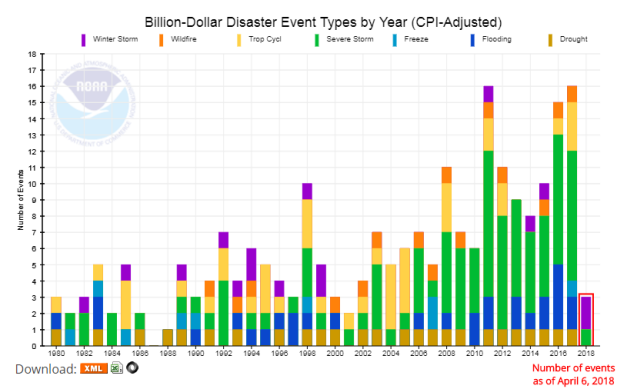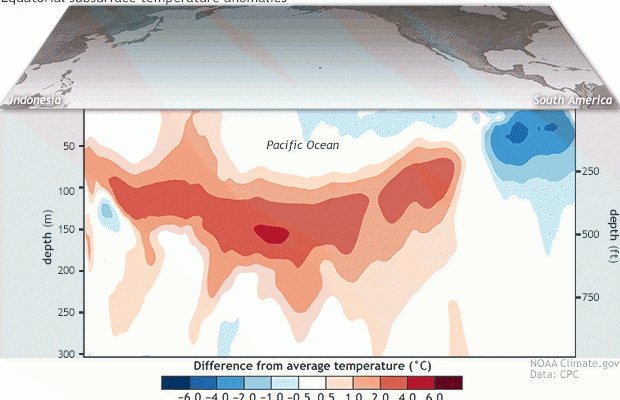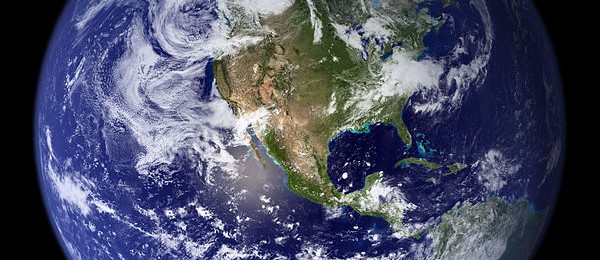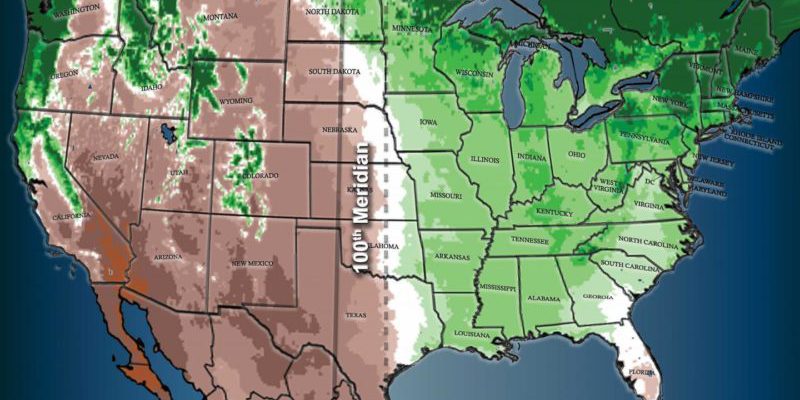Climate science
-

This week I ran across a comprehensive discussion of the science of global warming and climate change that might be useful for you as you discuss the science of changing climate with others. It is presented in a question-and-answer format that follows along with a lot of questions that I get from people who don’t…
-

Aerosols are small particles that are lofted into the atmosphere by the effects of trees, volcanos, and human enterprises like farming, driving, and building. Aerosols in the air can affect the climate in a number of ways. If they are hydroscopic they can attract water vapor and become larger, affecting visibility and how much terrestrial…
-

The latest issue of NOAA’s Beyond the Data blog by Deke Arndt looks at the statistics of March 2018 in the larger context of how to interpret anomaly maps and trends and discusses what a billion-dollar weather disaster really means. You can read it at https://www.climate.gov/news-features/blogs/beyond-data/all-things-being-equal-edition.
-

The latest ENSO update from NOAA at Climate.org shows that a blob of warmer than normal temperatures is slowly moving eastward under the surface of the equatorial Pacific Ocean and should displace the cold water that remains from the fading La Niña in the next few months. That has increased the chances of an El…
-

If you listen to local media of either party talk about recent trends we have seen in climate, you will notice that some outlets use “climate change” to discuss the trends while others use “global warming”. Scientists generally prefer “climate change” because the changes we are seeing to the climate due to humans, including land…
-

I spent a summer in Fort Worth, Texas, where they define the difference between their fair city and their nearest neighbor as “Dallas is where the East peters out, and Fort Worth is where the West begins.” But there is also a climatological difference between the two places, with drier conditions at Fort Worth than…
-

Floods are a liquid disaster caused by heavy precipitation or training storms which drop their moisture over the same spot over and over again. Slow-moving storms and saturated soils can contribute to the volume of water that comes down the river channels. In some parts of the country, rain falling on snow makes rapid snowmelt…